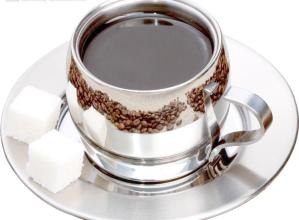The Venezuelan coffee producing area of San Cristobal, located in Tazira in the southwest.
The characteristics of Venezuelan coffee:
Venezuelan coffee tastes different from other coffee in Latin America. It is delicious, light and less sour than traditional coffee, which makes it not only blended but also distinctive.
Flavor: rich and delicious fruit flavor
Suggested baking method: medium to deep baking, multiple uses
★★: good
The market for Venezuelan coffee:
Currently, most Venezuelan coffee is exported to Russia and Colombia, where it is repackaged. Many small newly rebuilt plantations have also begun to export coffee on their own. The coffee industry is not very prominent among the country's many industries. One of the many plantations in Merida, under the Andes, belongs to the Pablo and Pulido families, an ancient farm that has been allowed to downsize. Since taking over the farm in the early 1980s, the Pulido family has grown new trees to expand the farm while harvesting coffee from existing bourbon trees.
The Caracas Zhouyuan area, once famous for its coffee, has resumed production. In addition, the Jean and Andries AndresBoulton plantations in the Turgua region also grow the Tippica Coffee Tree. The best coffee names in Venezuela are: Montebello in San Cristobal (SanCristobaldeTachira) in Tacira, Miramar in Rubio (RubiodeTachira) in Tazira, Granija in Timothe in Merida, Granija in Merida. Araglaneza (AlaGranjia) is produced in SantaAnnadeTachira, Tazira. Other high-quality products include Maracaibos (the name of the coffee export port), Merida, Trujillo (Trujillo), SantaFilomena (San Ferromona) and Cucuta (Venezuela's coffee producing areas):
The best coffee producing area in Venezuela is the southwestern state of Tachira. But the name Tazira has been indiscriminately used for coffee beans across the country

Important Notice :
前街咖啡 FrontStreet Coffee has moved to new addredd:
FrontStreet Coffee Address: 315,Donghua East Road,GuangZhou
Tel:020 38364473
- Prev

Introduction of Dominica coffee with full grains and excellent acidity
Flavor and taste characteristics: fresh and elegant, full particles, excellent acidity, pleasant aroma. The Dominican Republic is located in the east of the island of Haiti in the West Indies, bordering the Republic of Haiti to the west, the Atlantic Ocean to the north and the Caribbean Sea to the south. With an area of about 49000 square kilometers and a population of 7.1 million, the Dominican Republic and the Republic of Haiti coexist on an island bordering Haiti. Like its neighbors.
- Next

Introduction to sunny Sidama Coffee with nutty fruit aroma
Sidamo Coffee beans are grayish, thick in some places and small in others, with soft and strong acidity, mellow and sweet and spicy. It is one of the courtyard coffees in the highlands of southern Ethiopia. Unlike ordinary African coffee, Sidamo has clear acidity, smooth taste and delicate floral smell. The taste of Sidama in the sun is close to the smell of flowers, but slightly.
Related
- Does Rose Summer choose Blue, Green or Red? Detailed explanation of Rose Summer Coffee plots and Classification in Panamanian Jade Manor
- What is the difference between the origin, producing area, processing plant, cooperative and manor of coffee beans?
- How fine does the espresso powder fit? how to grind the espresso?
- Sca coffee roasting degree color card coffee roasting degree 8 roasting color values what do you mean?
- The practice of lattes: how to make lattes at home
- Introduction to Indonesian Fine Coffee beans-- Java Coffee producing area of Indonesian Arabica Coffee
- How much will the flavor of light and medium roasted rose summer be expressed? What baking level is rose summer suitable for?
- Introduction to the characteristics of washing, sun-drying or wet-planing coffee commonly used in Mantenin, Indonesia
- Price characteristics of Arabica Coffee Bean Starbucks introduction to Manning Coffee Bean Taste producing area Variety Manor
- What is the authentic Yega flavor? What are the flavor characteristics of the really excellent Yejasuffi coffee beans?

